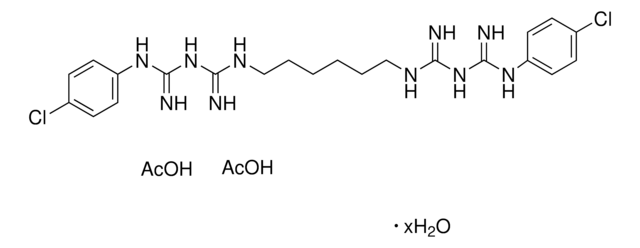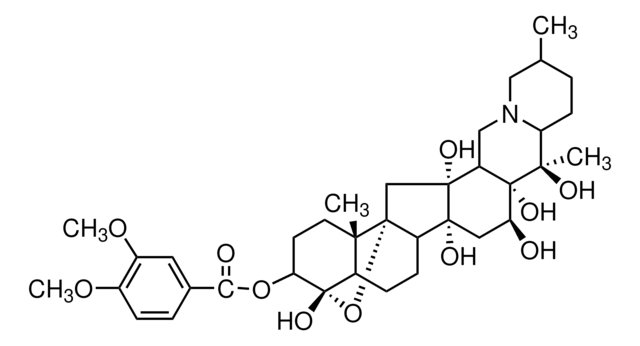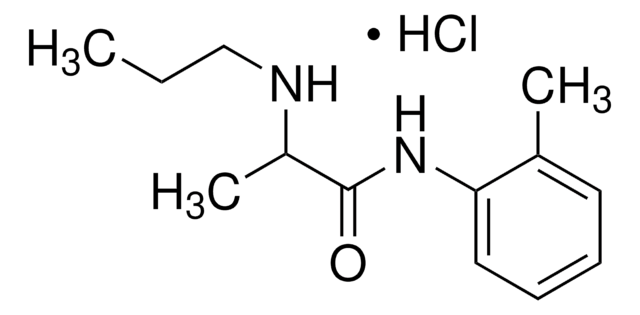T7508
Tetracaine hydrochloride
≥99%
Sinonimo/i:
4-(Butylamino)benzoic acid 2-(dimethylamino)ethyl ester, Amethocaine hydrochloride
About This Item
Prodotti consigliati
Livello qualitativo
Saggio
≥99%
Solubilità
chloroform: soluble 30 parts
alcohol: soluble 40 parts
H2O: soluble mg/mL
acetone: insoluble
benzene: insoluble
diethyl ether: insoluble
Stringa SMILE
Cl.CCCCNc1ccc(cc1)C(=O)OCCN(C)C
InChI
1S/C15H24N2O2.ClH/c1-4-5-10-16-14-8-6-13(7-9-14)15(18)19-12-11-17(2)3;/h6-9,16H,4-5,10-12H2,1-3H3;1H
PPWHTZKZQNXVAE-UHFFFAOYSA-N
Informazioni sul gene
human ... SCN10A(6336) , SCN11A(11280) , SCN1A(6323) , SCN2A(6326) , SCN3A(6328) , SCN4A(6329) , SCN5A(6331) , SCN7A(6332) , SCN8A(6334) , SCN9A(6335)
Cerchi prodotti simili? Visita Guida al confronto tra prodotti
Applicazioni
Azioni biochim/fisiol
Caratteristiche e vantaggi
Nota sulla preparazione
Avvertenze
Danger
Indicazioni di pericolo
Consigli di prudenza
Classi di pericolo
Acute Tox. 3 Oral - Eye Irrit. 2 - STOT SE 3
Organi bersaglio
Central nervous system
Codice della classe di stoccaggio
6.1C - Combustible acute toxic Cat.3 / toxic compounds or compounds which causing chronic effects
Classe di pericolosità dell'acqua (WGK)
WGK 3
Punto d’infiammabilità (°F)
Not applicable
Punto d’infiammabilità (°C)
Not applicable
Scegli una delle versioni più recenti:
Possiedi già questo prodotto?
I documenti relativi ai prodotti acquistati recentemente sono disponibili nell’Archivio dei documenti.
I clienti hanno visto anche
Il team dei nostri ricercatori vanta grande esperienza in tutte le aree della ricerca quali Life Science, scienza dei materiali, sintesi chimica, cromatografia, discipline analitiche, ecc..
Contatta l'Assistenza Tecnica.







